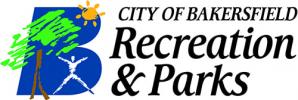
For league administrators, organizing practice schedules is a critical task that impacts the efficiency of the entire season. A well-structured schedule ensures that teams get their necessary practice time while preventing conflicts with other teams, facilities, and events. However, this process can be time-consuming and prone to errors without the right tools.
Streamlining Practice Scheduling with Automation
Manually assigning practice slots can be daunting. With an automated scheduling tool, administrators can generate a full-season schedule based on availability, team needs, and league priorities. This not only saves time but also ensures a fair distribution of practice times while reducing conflicts.
Steps to automate scheduling:
Set up league-wide scheduling parameters.
Define team practice frequency and location preferences.
Use an automated tool to generate the full-season schedule.
Review and adjust based on league needs before finalizing.
Providing Coaches with Controlled Flexibility
Some leagues prefer a structured practice schedule, while others allow coaches to adjust their practice times. With configurable permissions, administrators can decide whether coaches can edit schedules while ensuring conflicts are flagged before finalizing changes. A hybrid approach, where leagues set an initial schedule and allow coaches to make updates, helps balance control and flexibility.
Ways to manage coach permissions effectively:
Set default practice schedules at the start of the season.
Turn coach editing on or off based on league preferences.
Allow controlled changes with conflict detection.
Provide clear guidelines on how coaches can request changes.
Enhancing Communication with Automated Notifications
A well-planned schedule is only effective if everyone is informed. Automated email, text, or app notifications help keep coaches, players, and parents updated on any changes. Administrators can configure these notifications at key intervals, reducing miscommunication and last-minute confusion.
Best practices for practice schedule notifications:
Set up automated reminders for upcoming practices.
Send alerts for any schedule changes.
Ensure parents and players have access to real-time updates.
Utilize multiple communication channels to reach all participants.
Utilizing a Public Multi-Location Calendar
Visibility is key to preventing scheduling conflicts. A public multi-location calendar allows administrators, coaches, and teams to see available practice slots in real time, making it easier to adjust schedules as needed. This calendar ensures that fields and facilities are used efficiently throughout the season.
How to optimize a shared practice calendar:
Provide access to all coaches and administrators.
Regularly update the calendar with real-time availability.
Use color coding to differentiate teams and locations.
Encourage teams to check availability before requesting changes.
Simplifying Practice Scheduling with TeamSideline
For administrators looking to streamline scheduling, TeamSideline offers features designed to automate practice assignments, provide controlled coach access, and enhance communication. By leveraging these tools, leagues can save time, reduce scheduling conflicts, and ensure a smooth season for all involved.
Want to learn more? Contact our sales team for a demo at sales@teamsideline.com
 The Sports Management Platform
The Sports Management Platform





